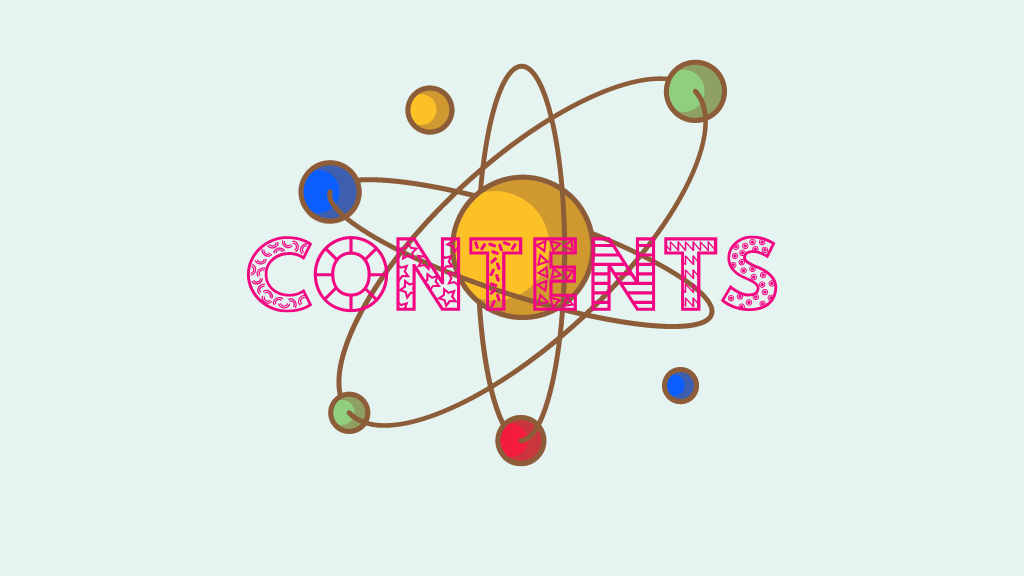Last Updated on 30/08/2025
The right content, created and shared in the right online places and platforms, can attract an audience’s attention, keep them engaged, and make a brand more memorable. While this may be familiar to more experienced content marketers, determining the suitable content can be difficult for any professional or company.
Every content marketer knows that developing excellent content for their audience takes time and effort. Whether it’s a blog post, a white paper, a podcast, or a video, creating captivating content often calls for planning, research, interviews, sharp writing, editing, design, and more. That’s a lot of effort, so it only makes sense to maximize the effect of what you create.
For this, content atomization can be useful.
While this term was coined by Todd Defren, it is now used by almost every major company and organization worldwide to maximize the impact of their content marketing.
Accepting this method of thinking can change how you approach creating content and producing videos for your website.
But what is atomization, and how can it help your business?
Here’s everything you need to know about content atomization and why it’s essential for growing your content marketing plan.
What is Content Atomization?

Content atomization is the process of breaking down a piece of information into smaller, reusable components that can be utilized throughout your marketing plan and across multiple marketing platforms. The goal is to obtain as much information as possible from a lengthy piece of content by breaking it down into more ideas.
Marketers produce smaller, more targeted bits of information during the content atomization process. These elements may use new formats or target platforms other than the original asset.
Here are some examples of content atomization:
- Creating a more detailed YouTube video from a chapter of an ebook.
- Taking a concept from a podcast episode and developing it in a post.
- Converting a case study question into a LinkedIn poll.
This technique expands the reach of your information and considers the diverse preferences of your audience.
Content atomization vs. content repurposing
Content atomization is similar to content repurposing because it enables you to transform existing content into something new.
Content Repurposing allows you to reuse a single piece of content in a new manner. For example, you can convert a blog into an educational YouTube video or infographic.
On the other hand, Content Atomization is the process of extracting new content from a major piece of content, such as an e-book or white paper, for use in a guest post, social media post, graphic, or video.
Benefits of Content Atomization!

Content atomization is all about maximizing the value of the content you’ve already developed. It’s efficient, facilitates distribution, and keeps your message consistent, all of which result in a higher ROI on your content marketing investment.
Some other benefits of content atomization include:
1. Expand Reach and Visibility
Content atomization can enhance your online reach and visibility by enabling you to create and distribute content more quickly across multiple marketing channels.
For example, a blog series can inspire the creation of an infographic or video, which can be distributed via email marketing or social media.
2. It Shows You as an Expert
Regarding business positioning, you must guarantee that your target audience perceives you as an authority. Having many pieces of content that follow a given theme or collection of ideas makes you appear well-versed in a particular subject.
When potential leads discover that you’ve thoroughly covered a specific topic across several channels, they become more trusting. Finally, content atomization puts you ahead of competitors who may not have taken a similar approach.
3. Repurposing Opportunities
If you truly want to take content atomization to the next level, don’t limit it to just one type of content. Instead, break down your content into several formats. In other words, create a structure that allows for repurposing and use in other formats. For example, you can create a well-crafted multi-part blog series and use it as the foundation for a Podcast series, an email newsletter series, a series of social media posts, and so on.
Alternatively, you can divide your “ultimate” guide or White Paper into chapters (or segment it in another way) to create a blog series. In other words, content atomization can help you expand your content across various formats and platforms.
4. Efficient and Cost-Effective
Atomization enables you to extract additional value from every piece of content you create. Instead of constantly creating fresh material, you may reuse a single piece in many formats, saving time and resources. This strategy is beneficial for teams with limited resources or short budgets.
5. Increases Audience Engagement
Content atomization can boost audience engagement across several media and formats. For example, some website users may prefer a video over a blog on any given day of the week, increasing engagement with Ipaas on the same issues without creating wholly new material.
Additionally, atomization enables you to delve deeper into broad issues, breaking down complex concepts into smaller, more manageable pieces to make them more accessible to viewers and hyper-focused on pertinent topics.
6. SEO Benefits
Atomized content can also help with SEO efforts. By writing multiple pieces of content about a single topic, you naturally combine a range of keywords and topics, thereby boosting your search engine exposure and organic traffic.
7. Promotes Authority
Content atomization can help your company establish authority and become a trusted resource on specific issues. Creating material focused on a specific issue allows you to go deeper, making you appear more educated than your competitors.
How do you include content atomization in your marketing strategy?

Atomizing content is a strategic technique that needs careful preparation and execution. Here are the steps to take when performing a content atomization strategy:
a. Establish Your Marketing Goals
Marketing goals are required for all strategies to measure campaign effectiveness and success. Consider why you have a blog. Most businesses use blogs to raise brand awareness about specific themes and their products, services, and brands. Your content atomization strategy should include similar goals to help you determine whether atomization is effective in reaching new clients.
b. Identify The Core Content
Every content atomization approach is based on core content, a larger piece of content that can be divided into smaller, more manageable pieces. You can create new key pieces of content or examine your existing content to determine if it could be effective.
A longer blog post should include themes you wish to examine in depth, but don’t have enough space. An e-guide to e-commerce logistics may mention reverse logistic,s but may not cover all the specifics that customers may be interested in.
c. Determine the Format
Ultimately, your target audience and available resources will determine the most suitable format for the topic.
If you don’t have access to a graphic designer, a detailed infographic may not be the ideal solution for your firm. However, if you have a writer, you can divide larger core topics into smaller subtopics using blogs or social media posts.
When determining the primary content and subtopics, create a list next to each subtopic with format ideas to help you allocate resources when implementing the strategy.
d. Adapt Content to Different Platforms
Remember that you distribute various types of content across multiple channels. Starting with your primary content, note any themes or topics you can delve into later and generate small portions of information.
Then, optimize each item based on the platform. You can modify content for blogs, social media posts, emails, and even text message marketing.
e. Post Your Content
How you publish your content will be determined by where you share it.
If you developed a shorter blog from an e-book, you can publish it like any other material on your website. You can, however, use marketing automation to schedule social media postings, e-blasts, newsletters, and blogs for specific periods.
For example, suppose you know a user reads your core material. In that case, you may send them an email notification when you publish your atomized content, encouraging them to return to your site to learn more about a specific topic in depth.
f. Evaluate Performance
Measuring your content’s performance may help you identify the most compelling themes and platforms.
You may discover that certain types of content do better on social media than others. A complicated issue that requires a full explanation is unlikely to make a successful social media post, but an infographic could.
Measuring your content’s success can help you evaluate whether you need to change your strategy and identify the most relevant themes for your audience. This will allow you to develop more focused and personalized material across your content strategy.
What are the limitations of content atomization?

As you can see, content atomization allows content marketers to work smarter, not harder. However, it is important to emphasize that content atomization is not a substitute for developing new material. Here’s why:
- Your content will ultimately become old, outdated, and irrelevant
As time passes, laws, tastes, and fashions evolve. If a web design studio were to post a list of UX design best practices spanning 2016 to 2022, many of the suggestions and examples would likely appear outdated in light of current technology and user expectations. This is an excellent way to lose credibility with your audience.
- Your viewers will become bored with watching it repeatedly
You want your audience to follow and participate in your brand’s content, but they will only do so if you keep up your half of the bargain. You must continually provide them with new insights and ideas reflecting current challenges and opportunities. If your blog and social feeds feel like broken records, your audience will disengage and go on.
- Losing Coherence
While each content atom must be able to stand alone, it is as important that they contribute to a cohesive story. Avoid losing sight of the larger picture by atomizing the content to the point where the general context and flow are lost.
- Neglecting Quality
Maintaining content quality is crucial during the atomization process. Do not let the scale overshadow the substance. Remember to carefully create each information atom, paying special attention to the intricacies that set the content apart.
This enables you to engage your audience and deliver a message that genuinely resonates with them. Embrace the power of accuracy in atomization and let your content shine through its substance and depth.
You can keep your material engaging and impactful by creating a balance between the individual pieces and the overall plot.
Examples Of Atomized Content!
Here are a few examples of how you can atomize content:
1. Infographics
To improve the presentation of your original information, consider extracting significant statistics or data points and visualizing them. This method not only enhances visual attractiveness but also helps convey important data in a more engaging and compelling manner.
By presenting pertinent data visually, you can effectively communicate trends, patterns, and insights to your audience, making your content more helpful and engaging.
2. Social Media Posts

Consider adding quotations, photos, or short video snippets to increase the readership of your original content on social media. These aspects can help you pivot your content and capture your readers’ interest.
- By using attractive imagery and compelling quotes, you may make your viewers’ experience more immersive and interactive.
- This strategy enhances the visual appeal of your material and amplifies its overall impact, making it more shareable and memorable.
So, don’t be afraid to get creative and experiment with various media types to make your social media postings stand out!
3. Podcasts and Webinars
One successful method for increasing the reach and engagement of your blog pieces is to repurpose them as engaging podcast episodes or informative webinar sessions. By converting chunks of your written content into audio or video formats, you can cater to diverse learning styles and offer a more engaging experience for your audience.
- Podcasts enable a more in-depth investigation of specific themes.
- Similarly, presenting webinars allows you to communicate with your audience in real-time, answering questions and providing essential insights.
- These new forms not only enhance the accessibility of your content but also enable you to engage with a broader audience and establish yourself as an authority in your field.
4. Email Campaigns
To create a complete and engaging sequence of emails, we can utilize various aspects of the text to guide the reader through the topic in stages. By gradually unpacking the information, we can ensure that the reader develops an in-depth understanding of the subject over time.
- Each email can address a specific topic, building on the previous ones while providing insightful insights and actionable advice.
- This strategy provides a more immersive and instructive experience while developing a closer relationship with the reader.
- By sending out this carefully prepared email series, we can effectively impart knowledge, offer guidance, and foster long-term relationships with our audience.
5. eBooks and White Papers
Creating an eBook from linked blog entries is a smart way to repurpose content. By doing so, you can create a comprehensive resource that explores the topic in greater detail.
Another option is to elaborate on the main themes of your blog posts to create an additional white paper. This will enable you to discuss the issue in more detail and provide valuable insights to your audience.
Whether you publish an e-book or a white paper, these content repurposing tactics will help you make the most of your existing blog content.
Importance Of Measuring Content Atomization
Content atomization aims to measure your outcomes and determine which portions of your target audience are more responsive. For example:
- Let’s say you’ve written one main blog post, four lesser posts, a YouTube video, and a podcast episode.
- Before moving on to a second type of content, examine how well each performs.
- This should give you a good notion of what types of content to pursue and which to avoid.
- The best aspect of employing interactive content as part of a larger atomization plan is that it provides valuable insights into your atomization performance.
Consider this: if a video or quiz isn’t performing well, your longer blog entries may not be making progress. At that point, it may be a good idea to brainstorm the various types of material your target consumer enjoys the most and adjust accordingly.
Conclusion
Content atomization is a transformational approach to content marketing, not just a technique. Breaking down a single content into many personalized parts expands its reach and attracts a wide range of audience tastes.
As you embark on the atomization path, remember that it is about providing more information and creating the appropriate content using the proper methods for the right audience.
This technique enables you to elevate your content strategy to new heights and foster significant engagement, ensuring your brand stands out in the technology landscape.
FAQs
Content atomization breaks down huge pieces of content into smaller, more manageable parts that can be read and shared across multiple platforms and channels.
Look for extensive content pieces, such as long-form articles, films, webinars, e-books, or whitepapers, that feature multiple subtopics, statistics, quotes, or visuals that can be repurposed into smaller, standalone pieces.
Key metrics to monitor include engagement rates (likes, shares, and comments), click-through rates, dwell time, conversions, and overall reach and impressions across all channels and platforms.


